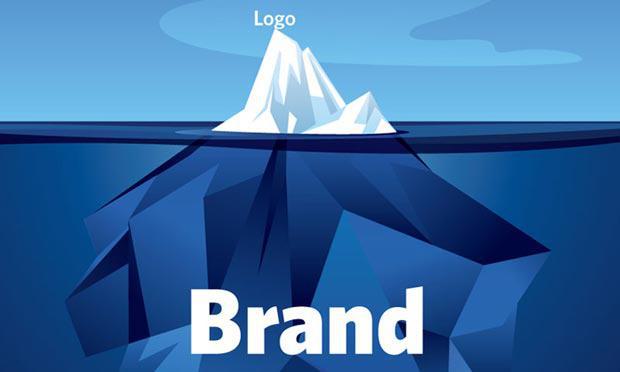In the regionally isolated, relatively disconnected world of the 19th and 20th centuries, brands could be general—quite literally. Think General Mills (est. 1866), General Electric (1892), General Motors (1908), etc. For these organizations and others like them, their “brands” grew out of a descriptive package for their offers. It’s not inconceivable that a manufacturer could have existed quite happily for 100 years as “Tin Can Company.” But what would have happened to The Tin Can Company when new materials arrived on the scene to provide a superior alternative for canning? Or when canning itself became obsolete as a viable method for food preservation? The future of The Tin Can Company may be less about tin or even cans, and more about food—or whatever it packs into those cans. Even that may be inadequate to speak to the human need the company addresses for consumers, which might be “nourishment” rather than “food,” per se.
Today’s global, technologically interconnected marketplace has prompted many organizations to reconsider themselves and their brand claims. General is no longer enough. Descriptive is no longer enough. Brands have to mean something to somebody, or they’ll end up meaning nothing to everybody. Connection, value, meaning: future-proof brand building begins with these foundational elements.
Brands are ideas, perceptions, promises. They can reflect a specific human need to a depth that products, services, or even the organizations offering them cannot. When an organization invests (both monetarily and emotionally) in discovering these human needs—the things their customers value—then that organization has taken the first step toward a brand claim that can outlive market changes. Future-proof brands reflect the values of the people they serve. After all, values are eminently more meaningful and durable than tin cans.
Platforms over Products
At our firm, Peopledesign, we help clients discover and build on brand platforms. A brand platform is a foundation for identifying and fulfilling a customer-centered value proposition. It encompasses products and services as well as their delivery, use, maintenance, and (ultimately) either renewal and reuse or cancellation and disposal.
Our process for discovering and building on brand platforms begins with research to discover what our clients’ customers – or potential customers – value. Identifying customer insights and market opportunities can prompt tough decisions for our clients as we work through a value proposition. Businesspeople are accustomed to talking about value propositions, but often there’s too much talking and not enough deciding.
Value Proposition + Customer Experience = Brand Platform
Effectively communicating a decisive value proposition involves planning and executing a complete customer experience. An organization’s logo may be the most immediate and visceral expression of the value proposition, but a logo is just a symbol. The total customer experience is made up of a whole sequence of touchpoints. Each customer touchpoint is an interaction that can be designed with an explicit goal—and each touchpoint can be an opportunity to make or break a brand promise.
The total customer experience is made up of a whole sequence of touchpoints.
A clear value proposition with a clear customer experience roadmap for fulfilling that value proposition add up to a brand platform. A brand built on a strong brand platform opens new innovation spaces for the organization it represents. While products and services alone tend to bump into their own limitations, brand platforms can adapt to changing conditions without making conflicting promises. Thus, Apple’s brand can expand beyond computers into communications and entertainment. Amazon’s brand can expand beyond online retail into cloud-based computing services. Zappos’ brand can expand beyond shoes into customer service. With brand platforms, it’s hard to tell the difference between products and services. That distinction is less important than the holistic value the brand platforms deliver.

A Foundation for Brand Identity
For organizations with strong and dynamic brand platforms, brand identity—whom the organization is in the minds of its customers—is less about what the organization is selling and more about how well it can be integrated into people’s lives.
The name of this book is Brand Identity Essentials, but a good portion of it is dedicated to logos. And remember… a logo is a symbol of the brand. It is not the brand. Logos. Identities. Brands. What’s the difference?
The word logo is short for logotype—a simple graphic representation of a brand. So, essentially, a logo is a picture that represents the collection of experiences that forms a perception in the mind of those who encounter an organization.
Identity is often (mistakenly) used interchangeably with logo, but an organization’s identity encompasses much more than its logo. The organization’s name is equally as important as the picture used to represent it. Other elements, such as the color of a company’s mailing envelopes or the music customers hear while on hold on the telephone, are elements of the identity. Most of the logos we admire more often than not are part of a well-designed system. In such a system, the application of the logo (as well as these other elements) has been as carefully considered as the logo itself.
The organization’s name is equally as important as the picture used to represent it.
An exploration of identities without including logos would be like a tour of France without a stop in Paris. Including a discussion of brands and how they relate to identities is like connecting the trip to the culture of Western Europe. It puts it all in context.
It might help to think of it this way: The logo is a picture; the complementary elements and application decisions form a program; and the perception created by the picture and the program form the visual center of the brand.
This article was originally published as an introduction to Brand Identity Essentials.
